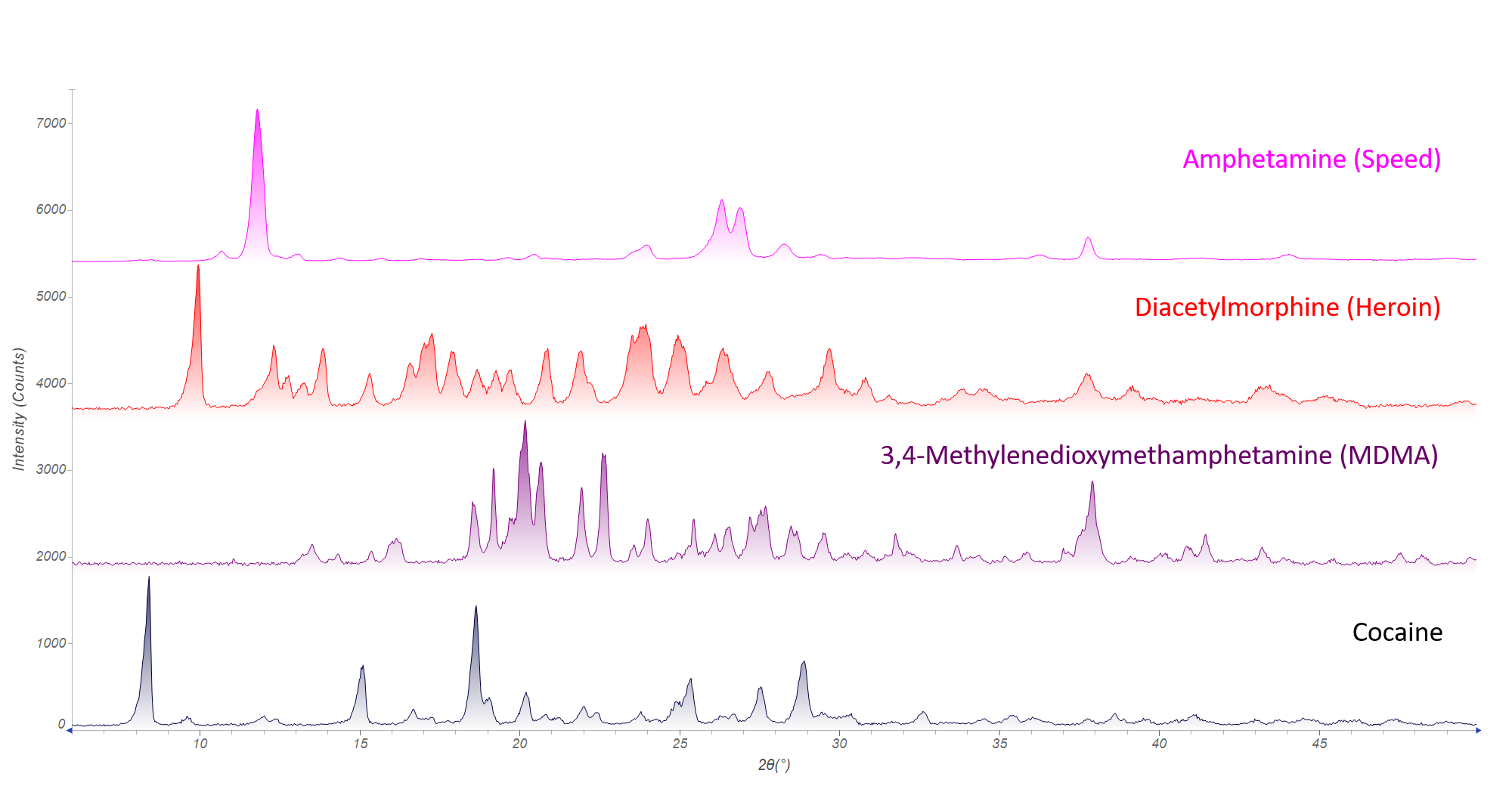As global drug use continues to rise, worldwide drug trafficking now represents a half-a-trillion-dollar industry, making it the second most lucrative illicit market next to counterfeit and pirated goods.
More than 470 tons of heroin and 1,700 tons of cocaine are produced annually and trafficked around the world, according to the United Nations. Moreover, the drug market is becoming increasingly complex with new synthetic drugs manufactured at an unprecedented rate. Today, illegal synthetic drugs are proliferating both in quantity and diversity, some using hundreds of substances and diverse chemical structures to achieve the desired psychoactive effect.
As criminal investigators work to stem global drug trafficking, one of the key tools for the forensic analysis of drugs is X-ray diffraction (XRD). Using forensic XRD, forensic scientists can quickly obtain detailed phase and structural information of crystalline materials by bombarding drug samples with incident X-rays and then measuring the intensities and scattering angles of the X-rays scattered by these samples.
XRD is an important part of the analytical workflow for the identification of drug samples. Using XRD, forensic scientists can confirm findings from complementary analytical techniques such as mass spectrometry, while providing additional information about the crystalline structure of drug samples.

As global drug use continues to rise, X-ray diffraction is an important tool to help identify variability in drug samples—helping criminal investigators track down their source.
XRD can be used to confirm the specific drugs present in a seized substance, while determining their chemical forms. It can also quantify the concentration of the main drug component and additional chemicals found in a drug substance—a critical step in tracking down the source of a specific batch of drugs.
Take heroin, for example. Heroin exists in four forms: free base, hydrochloride monohydrate, tartrate and citrate. Using XRD for forensic characterization, scientists can distinguish the form of heroin by determining the structure and matching the profile to a database of different heroin samples.
Similarly, cocaine exists in three forms: free base, hydrochloride and crack cocaine. Using XRD, scientists can identify the form of the cocaine they have seized. They can also identify the purity of the drug sample as well as the percentage of lactose, caffeine and other cutting agents mixed into the powder to increase the seller’s profitability. Identifying the exact concentrations of each substance found within the drug sample enables forensic scientists to characterize the exact batch, which, in turn, helps them uncover the criminals who manufactured it.
To help with the forensic analysis of drugs, Thermo Fisher Scientific offers the ARL EQUINOX series of X-ray diffractometers. The portfolio includes easy-to-use benchtop systems that can be transported between laboratories for routine analyses. It also includes more advanced floor models that offer research-grade results even when analyzing minute drug quantities. The ARL EQUINOX comes with a unique, curved position sensitive detector that measures all diffraction peaks simultaneously across a wide angular range for fast and accurate results. Analyses typically take just a few minutes on most samples regardless of the resolution requirements.
Using forensic XRD, scientists can easily identify the type, form and composition of drug samples, while tracking down the source of these drugs. With the ability to quickly and accurately analyze even trace amounts, criminal investigators are better positioned to curtail the flow of illegal drugs both within and across national borders.
Dr. Simon Welzmiller is a Global Application Specialist XRD at Thermo Fisher Scientific.
//
To learn more about how XRD can be used for the forensic analysis of drugs, watch our on-demand webinar, Find the Evidence in Forensic Labs with Multiple Scientific Techniques: An introduction of XRF, XRD, FTIR and Raman for forensic analysis.
Also, see our application note: XRD analysis in forensic drug investigation using benchtop ARL EQUINOX 100 X-ray Diffractometer.
Leave a Reply